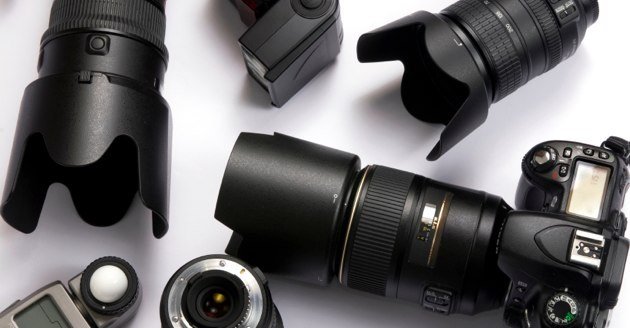Label: museum
Wednesday 22nd June 2016A Child's Cautionary Tale
May truly was a rough month for museums around the world. From the SFMOMA glasses prank pulled off by a teenager to the fake heists orchestrated in the National Portrait Gallery and the Tate Britain by members of Youtube prankster group Trollstation, it seems like things couldn't possibly get any worse. But if the modern world has taught us anything, it's that there's always some new horror in store just around the corner.
At least in the first two incidents, nothing was actually damaged in the museum with the possibility of a little bit of pride. This next story is something more of a disaster, and takes place in the Shanghai Museum of Glass (cringing already, are we?).
The tale involves two spoiled and undisciplined children who are let loose in the museum, and their absolutely useless parents. The kids completely disregard any of the proper rules of etiquette, and more than just crossing the velvet ropes, they actually go on to seriously damage a piece by artist Shelly Xue entitled Angel is Waiting. Xue is one of the pioneers of the studio glass movement in China, and spent 27 months making the piece which she dedicated to her newborn daughter.
The children began messing with the piece, and their parents, standing nearby, did absolutely nothing to prevent them. Unbelievably, they actually took out their phones to begin filming the outrage! It wasn't until the spoiled brats started actually slamming the sculpture against the wall that they began to call the children off, but not before the piece was completely fractured.
Rather than choose to repair the piece, Xue chose to leave it as-is as a testament to the whole event, and retitled it 'Broken', which is a rather classy way to handle something that must have been incredibly frustrating to her.
The museum didn't mention any sort of punishment that was meted out as a result of the incident, but they did install a screen beside the work displaying the closed circuit security footage of the incident. Hopefully, it will act as a cautionary tale to other parents of spoiled brats, but it seems to send a bit of a mixed message considering that there was no official punishment noted.
A word of caution for parents: make sure you keep your children under control around precious works of art. There is absolutely no excuse for this sort of behaviour.
Posted on June 22nd 2016 on 03:55pm
0 Comments
Wednesday 15th June 2016Google's Preservation of Artwork

Google, arguably one of the most successful technology companies of all time, has a lot of capital to invest. As a result, they have their fingers in a vast number of pies, from mobile phones to self-driving cars to scholarly article publishing. But one of their lesser-known ventures is the one that is probably nearest and dearest to those of us in the art world: the Google Cultural Institute.
The Cultural Institute has partnered with over 1000 museums and galleries around the world to digitise their artworks and bring them online, so they can be enjoyed by anyone with internet access. One of their best tactics for this is an incredibly high-resolution camera that is being used in the digitising process, and it just got a huge boost forwards in the last few months.
While having an initial burst of creativity during the launch of their search engine and naming it Google, the company has since gone rather literally-minded when it comes to naming their inventions (even their crazy balloon wireless internet project is called Project Loon, appropriately enough), which leaves us with the singularly uninspiring 'Art Camera'.
What IS inspiring, however, is how impressive it is when it comes to preserving images of some of the most popular artworks in the world. At first, the Cultural Institute was rather slow at digitising images, scanning and uploading just 200 images in five whole years. Admittedly, the images are measured in gigapixels rather than megapixels, but nevertheless, that's only about one image per week.
Suddenly in the last few months alone, over 1000 images have been scanned and made available to the general public, all thanks to the Art Camera system. The photographer/technician simply outlines the borders of the image for the system, and then the rest of the process is computer-controlled, stitching together hundreds of smaller photographers using the Google servers and outputting super-high-resolution images.
Marzia Niccolai, the Cultural Institute's technical program manager, explains, "The capture time has been reduced drastically. Previously it could take almost a day to capture an image. To give you an idea, now if you have a one meter by one meter painting, it would take 30 minutes."
Posted on June 15th 2016 on 01:57pm
0 Comments
Friday 31st October 2014Museum Hack: The Non-Tour Tour

As surprising as it may be for those of us in the art world to believe, there is a type of person out there who doesn't appreciate museums and galleries, and doesn't understand why they're enjoyable. Sounds almost impossible, right? But there are a huge number of them out there, and they are finally about to get their first chance to really change their minds. At least, if they are in New York City and are considering visiting the Metropolitan Museum of Art, or the Met as it is affectionately known by those of us who already appreciate it. A new start up named Museum Hack is attempted to shift the hearts and minds of those who see museums as dull, boring places with a set of tours specifically designed for the recalcitrant visitor. Nick Gray, the founder of Museum Hack, was just one such person, until a date (who was apparently an excellent tour guide) showed him around the Metropolitan Museum of Art.
OK, so that might be a bit of an oversimplification - it's not just targeted at grumps who feel dragged along to museums, but also at those who already know they appreciate museums but are simply looking for another way to experience the beauty of the artifacts they showcase. While it's a bit of a cliche at this point to refer to something as a 'hack' (no, using a CD spindle as a bagel holder should not be considered a 'life hack'), their tour of the Met, which is named the UnHighlights Tour, appears to be a favourite among those who have taken it, completely opening the eyes of the participants.
Unlike most tours, which tend to be a what's what of the most famous or prestigious works in the museum, the UnHighlights Tour is focused especially on the stories that make the works interesting, regardless of whether or not they have been specially singled out by the museum itself. To that end, Museum Hack hires tour guides from a wide variety of disciplines and backgrounds, as each guide has a unique take on what makes the museum an appealing place to spend time.
For the moment, they are only offering tours of the Metropolitan Museum of Art and the Museum of Natural History, but they hope to expand soon to the Brooklyn Museum and then on to other American cities. So if you happen to find yourself in New York City, and you're on the fence about whether to visit the venerable Met, take the plunge and sign yourself up for a Museum Hack tour and experience an art museum in an entirely new way.
Posted on October 31st 2014 on 01:18pm
0 Comments
Friday 17th January 2014The Drive to Save Detroit's Art Collection from Bankruptcy

While it may not be common knowledge in much of Europe, America's car manufacturing heartland is having some troubled times of late. After talks of bailouts of major car companies and successfully saving a few of them, we're finally starting to see some more complete fallout from the 2008 economic collapse that crippled much of American industry. One of the less-expected casualties from this turmoil, however, was the city of Detroit. Known unofficially as 'Motor City', Detroit was at the centre of American car manufacturing for a number of companies, and the city has been left bankrupt and desolate as jobs moved away and with them, the people. Abandoned houses are common, and the city is struggling to balance its debts.
Even fewer know that Detroit boasts a world-class art collection in the form of the Detroit Institute for Arts. As the gallery is owned and operated by the city, it has been presented by some officials as a means to help pull Detroit's economic futures out of the sinkhole they're currently mired in. The collection, is truly world class, with some of the highlights being van Gogh's 'Portrait of Postman Roulin', the famous sculptural masterwork by Rodin 'The Thinker', 'Fruit, Carafe and Glass' by Picasso as well as works by Bruegel the Elder, Cezanne, and Whistler, to name but a few.
Those who would hope to use the collection to help pay debts include insurance executives who view the works as non-essential to the mission of the city hope to gain as much as $2 billion dollars US from the sale of the best pieces, but museum officials say that initial consultations with Christie's auction house peg the collections value below that, and possibly even below $1 billion USD, as well as pointing out - rightly so - that sale of the collection wouldn't do much to solve Detroit's immediate financial problems and will eventually hinder the regrowth of the city into a vibrant metropolis.
As a compromise, city officials and the museum directors agreed to forestall the sale of the collection provided that the museum was able to fund itself and contribute money towards paying the city's pension obligations, which are a major source of debt. In January, museum officials said in a statement that they would push their fundraising capabilities to the outer limits and beyond, hoping to raise $100 million to join forces with the roughly $375 million already being contributed to the museum by a number of private institutions and fundraising groups in an effort to keep the museum doors open and the collection intact.
Posted on January 17th 2014 on 03:22am
0 Comments
 May truly was a rough month for museums around the world. From the SFMOMA glasses prank pulled off by a teenager to the fake heists orchestrated in the National Portrait Gallery and the Tate Britain by members of Youtube prankster group Trollstation, it seems like things couldn't possibly get any worse. But if the modern world has taught us anything, it's that there's always some new horror in store just around the corner.
May truly was a rough month for museums around the world. From the SFMOMA glasses prank pulled off by a teenager to the fake heists orchestrated in the National Portrait Gallery and the Tate Britain by members of Youtube prankster group Trollstation, it seems like things couldn't possibly get any worse. But if the modern world has taught us anything, it's that there's always some new horror in store just around the corner. Google, arguably one of the most successful technology companies of all time, has a lot of capital to invest. As a result, they have their fingers in a vast number of pies, from mobile phones to self-driving cars to scholarly article publishing. But one of their lesser-known ventures is the one that is probably nearest and dearest to those of us in the art world: the Google Cultural Institute.
Google, arguably one of the most successful technology companies of all time, has a lot of capital to invest. As a result, they have their fingers in a vast number of pies, from mobile phones to self-driving cars to scholarly article publishing. But one of their lesser-known ventures is the one that is probably nearest and dearest to those of us in the art world: the Google Cultural Institute. As surprising as it may be for those of us in the art world to believe, there is a type of person out there who doesn't appreciate museums and galleries, and doesn't understand why they're enjoyable. Sounds almost impossible, right? But there are a huge number of them out there, and they are finally about to get their first chance to really change their minds. At least, if they are in New York City and are considering visiting the Metropolitan Museum of Art, or the Met as it is affectionately known by those of us who already appreciate it. A new start up named Museum Hack is attempted to shift the hearts and minds of those who see museums as dull, boring places with a set of tours specifically designed for the recalcitrant visitor. Nick Gray, the founder of Museum Hack, was just one such person, until a date (who was apparently an excellent tour guide) showed him around the Metropolitan Museum of Art.
As surprising as it may be for those of us in the art world to believe, there is a type of person out there who doesn't appreciate museums and galleries, and doesn't understand why they're enjoyable. Sounds almost impossible, right? But there are a huge number of them out there, and they are finally about to get their first chance to really change their minds. At least, if they are in New York City and are considering visiting the Metropolitan Museum of Art, or the Met as it is affectionately known by those of us who already appreciate it. A new start up named Museum Hack is attempted to shift the hearts and minds of those who see museums as dull, boring places with a set of tours specifically designed for the recalcitrant visitor. Nick Gray, the founder of Museum Hack, was just one such person, until a date (who was apparently an excellent tour guide) showed him around the Metropolitan Museum of Art. While it may not be common knowledge in much of Europe, America's car manufacturing heartland is having some troubled times of late. After talks of bailouts of major car companies and successfully saving a few of them, we're finally starting to see some more complete fallout from the 2008 economic collapse that crippled much of American industry. One of the less-expected casualties from this turmoil, however, was the city of Detroit. Known unofficially as 'Motor City', Detroit was at the centre of American car manufacturing for a number of companies, and the city has been left bankrupt and desolate as jobs moved away and with them, the people. Abandoned houses are common, and the city is struggling to balance its debts.
While it may not be common knowledge in much of Europe, America's car manufacturing heartland is having some troubled times of late. After talks of bailouts of major car companies and successfully saving a few of them, we're finally starting to see some more complete fallout from the 2008 economic collapse that crippled much of American industry. One of the less-expected casualties from this turmoil, however, was the city of Detroit. Known unofficially as 'Motor City', Detroit was at the centre of American car manufacturing for a number of companies, and the city has been left bankrupt and desolate as jobs moved away and with them, the people. Abandoned houses are common, and the city is struggling to balance its debts.



